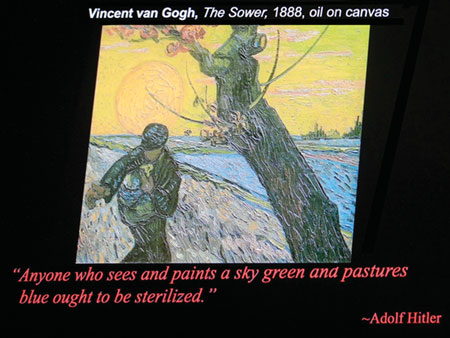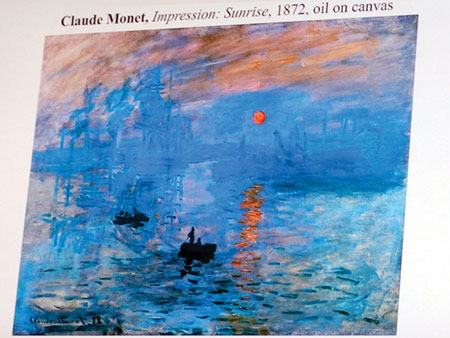
Art is not subjective. There’s a clearly defined set of criteria that determine what is considered great art, and what is considered to be a pretty painting, or a piece of work that’s good, but not up to par.
“As a curator, one of the things that drives me crazy is when people say all art is subjective,” said the Triton Museum of Art’s Chief Curator Preston Metcalf. “My head wants to explode. Let me answer that right now – NO. Art is not subjective. What you like about art, your preferences, is entirely subjective, but the criteria for artistic greatness are well established.”
The latest lecture in the museum’s Art History Lecture Series “A Curator’s Eye: Discerning a Masterpiece,” delves into the criteria that makes a piece of art a masterpiece. The series began with the psychology of a masterpiece on Feb. 6 where Metcalf began a six-week series digging into the aesthetics, consciousness, demands, and effects of a masterpiece.
Metcalf said that the criteria for a masterpiece is the same regardless of if it is a painting, sculpture, composition, film, or piece of literature. “These are not criteria that were created by Western, middle-aged white males. These are criteria that were established all by looking back. By looking at the works that have stood the test of time – that are recognized worldwide both in the west and in the east as masterpieces and determining what commonalities they have. What characteristics do each of these works possess that other lesser works may not? That’s how these criteria are established.”
Metcalf began breaking down the criteria of a masterpiece by explaining the psychological aspect contained in the greatest works. Each of the most celebrated pieces of art contains a bit of ambivalence and irony.

Masterpieces also don’t have to be pretty as is the case with Edward Kienholz’s The State Hospital – a repulsive 3D piece of two identical, naked, emaciated figures who are strapped down and laying identically on metal bunk beds. Metcalf said that it is a difficult piece to look at – a piece he would not hesitate to show at the museum, but a piece he never wants to see again in person – and it’s a masterpiece.
“Great art, as in great literature, is beyond the dualities of beautiful and ugly,” he said. “Great art possess that. It may be beautiful. It may be horrific – because those are judgments that we make. We’re the ones that apply those judgments of beauty.”
Most of all, great art is a celebration of the idea and something that strikes the viewer and causes them to look deeper within themselves. “If you don’t look at a great work of art and find an expansion of your soul – and we’re not talking religion here – if you don’t find that expansion of your humanity, then you have not seen the masterpiece,” said Metcalf, “you’ve just seen the painting. There’s a difference.”
The lecture series continues on Feb. 13 with the aesthetics of a masterpiece. Lectures begin at 7 p.m. at 1505 Warburton Ave. Drop in fee is $20. Visit http://tritonmuseum.org/education_adults_arthistory_winter2014.php for more information.





